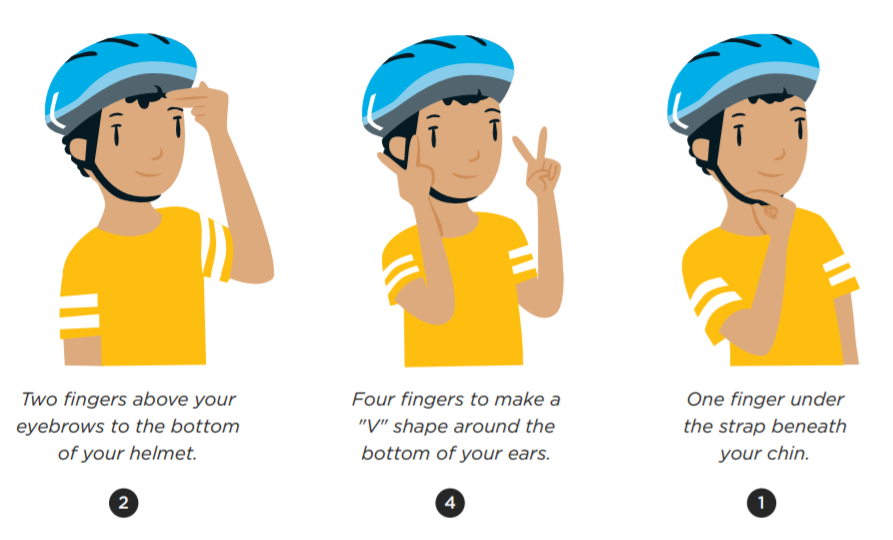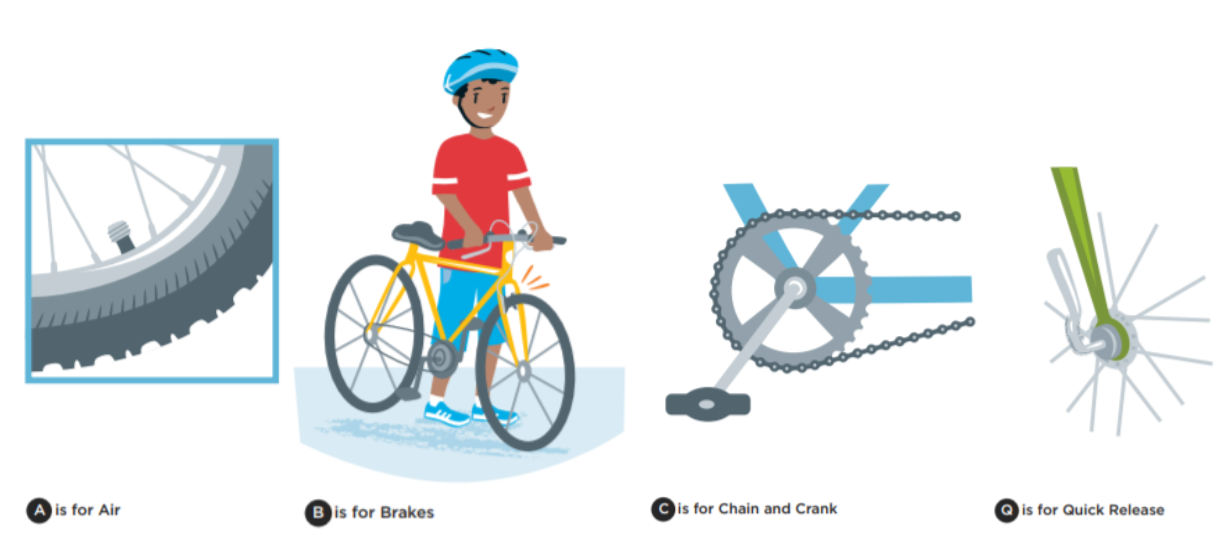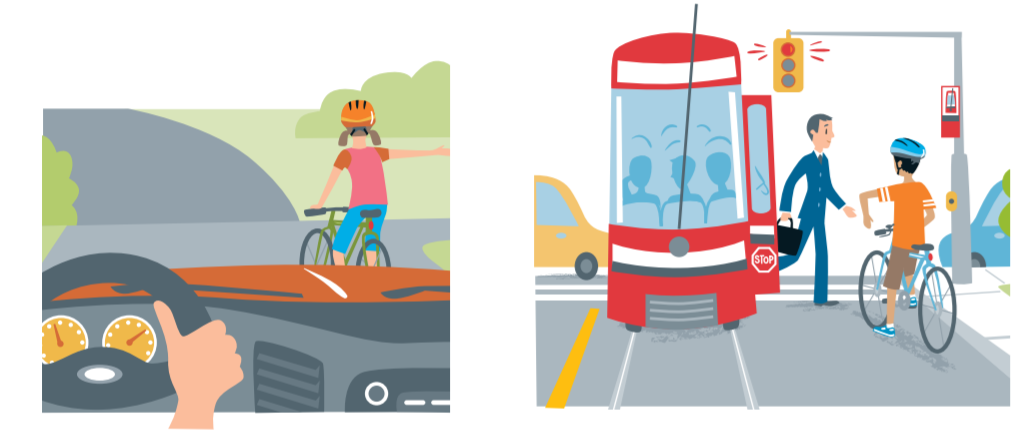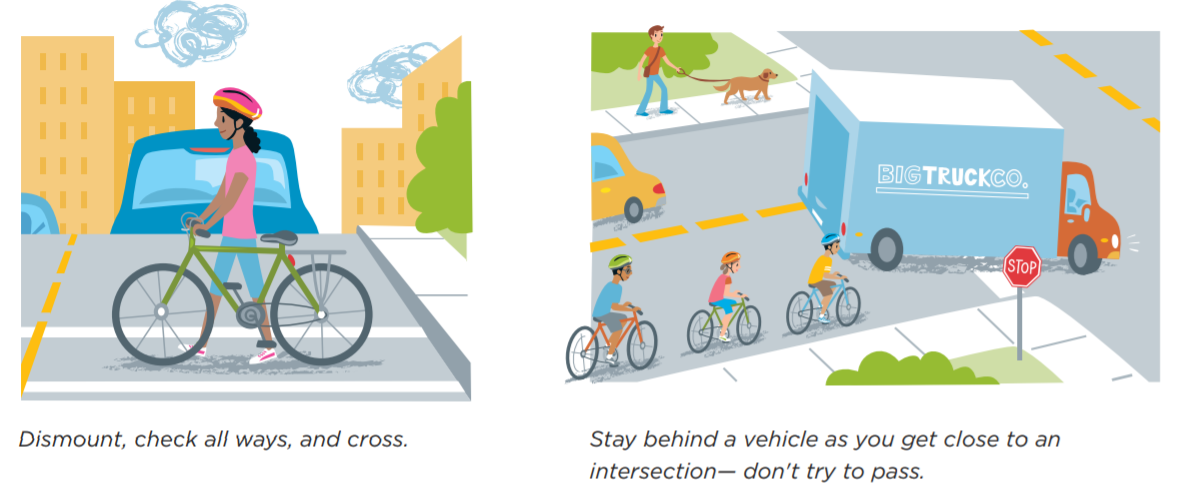6 Rules All Kids Should Follow When Riding a Bike
Some of the fondest memories I have from my childhood are of riding my bike around the neighbourhood. Not only is riding a bike fun, but it’s also the first sense of independence for many children.
Riding a bike is a great way to keep your kids physically active and adds to quality family time. But before they take their bikes out of the garage, here are some essential safety rules to follow according to the Young Cyclist’s Guide by the Ontario Ministry of Transportation. Have fun and ride safely!
RULE 1: Always wear a helmet
The #1 safety rule when you ride a bike: wear a helmet every time. A helmet gives you a real chance of walking away from a fall or a collision with a car, pedestrians or other bikes. Your helmet should be the correct size for you, be properly adjusted and worn on its own. If the helmet is damaged after an accident, make sure to replace it before your next ride.
The “2-4-1 Helmet Salute” is an easy way to make sure your helmet fits right so it can protect you:

RULE 2: Ride a bike that fits
It’s important to ride a bike that is the right fit for you. A bike that is too big can't be controlled properly and can be dangerous. Here’s how you can know if a bike is a right fit for you:
- When you straddle on the top tube of a bike both feet should be flat on the ground. There should be space between the crotch and the top tube.
- When sitting on the bike seat, you should be able to touch the ground with both feet.
- You should be able to reach the handlebars with a gentle lean and avoid stretching your back and shoulders.
- When buying a bicycle, ask the sales staff to show you how high the seat and handlebars can be raised to see how the bike can adapt as you grow.
- If your bike has handbrakes, make sure the levers are adjusted for your size so you can reach them and pull them strongly.
RULE 3: Before you go, check your bike
The ABC Quick Check is an easy way to remember what parts of your bike you need to check in a basic safety inspection and keep your bike in good shape.
A is for Air: Check your tires to see if they have enough air and if there are any holes in the tires.
B is for Brakes and Bars: Check your brakes to see if they work properly. Standing beside your bike, pull the brakes only. The wheels should lock up. Check to see if the handlebars are loose. Hold the front wheel between your knees and try to twist the handlebars side to side and up and down.
C is for Chain and Crank: Check the gears to see if the chain is on and lubricated, there is no damage, and that the pedals spin freely backwards.
"Quick" is for Quick Release: If your bike has quick release wheels, grab and shake the wheels to make sure it’s not loose. The quick release handles should be firmly closed and pointing toward the rear of the bike.
"Check" is for a Final Check Over: Lift the bike several inches off the ground and drop it. Listen for loose parts. Tighten as necessary. Try your brakes before you ride off.

RULE 4: Learn the rules of the road
Bikes are fun to ride but a bicycle is not a toy - it's your first vehicle! This means that as a cyclist you must follow the same rules and laws as drivers do.
When riding your bike remember the following road safety rules:
- Wear bright clothing so drivers can see you better.
- Ride one metre from the curb or from parked cars to avoid hazards.
- Ride in a straight line on the right-hand side of the road, in the same direction as traffic. Do not weave in between parked cars.
- Ride beside parked cars as if all the car doors were open. As long as you are riding in a straight line, motorists coming from behind will see you and give you enough space.
- Use hand signals early when turning or stopping – this lets drivers know what you are going to do next.
- Know and follow your road signs.

RULE 5: Dangers: What to watch for
- If riding on the sidewalk, be careful around people walking. Go slow. Check driveways for cars turning in, or backing out.
- Stop and look all ways before moving forward at an intersection.
- Get off your bike to cross at a crosswalk or busy street. Check all ways, and cross.
- Practice looking back over your shoulder without weaving your bike. Shoulder check regularly, and especially before you make a turn.
- Always ride in single file.
- Stay behind a car as you get close to an intersection — don't try to pass. You can get caught between the curb and another vehicle, and get squeezed.
- Never ride against traffic.
- Ride far enough out from the curb to maintain a straight line, steering clear of puddles, sharp objects like bits of glass, debris and holes in the pavement.
- Going through a stop sign or red light is dangerous. Make stopping a habit.

RULE 6: Important bicycle riding skills
- Riding in a straight line to help other people know what you are going to do next.
- Scan the road behind you. Learn to look back over your shoulder without losing your balance or veering into traffic.
- Making a surprise turn in front of a car is very dangerous. Signal all turns.
- Practice stopping and starting again, so that you get good at it, and it becomes easier.
- If your bike has gears, practice changing them so you can use them when needed, like climbing a hill or starting fast from a stop.

When it comes to kids riding a bike, safety is the top priority. Following these basic rules will help prevent bike injuries. Always wear a helmet and ride safely!
Source
Click here for the full Young Cyclist’s Guide by the Ontario Ministry of Transportation.